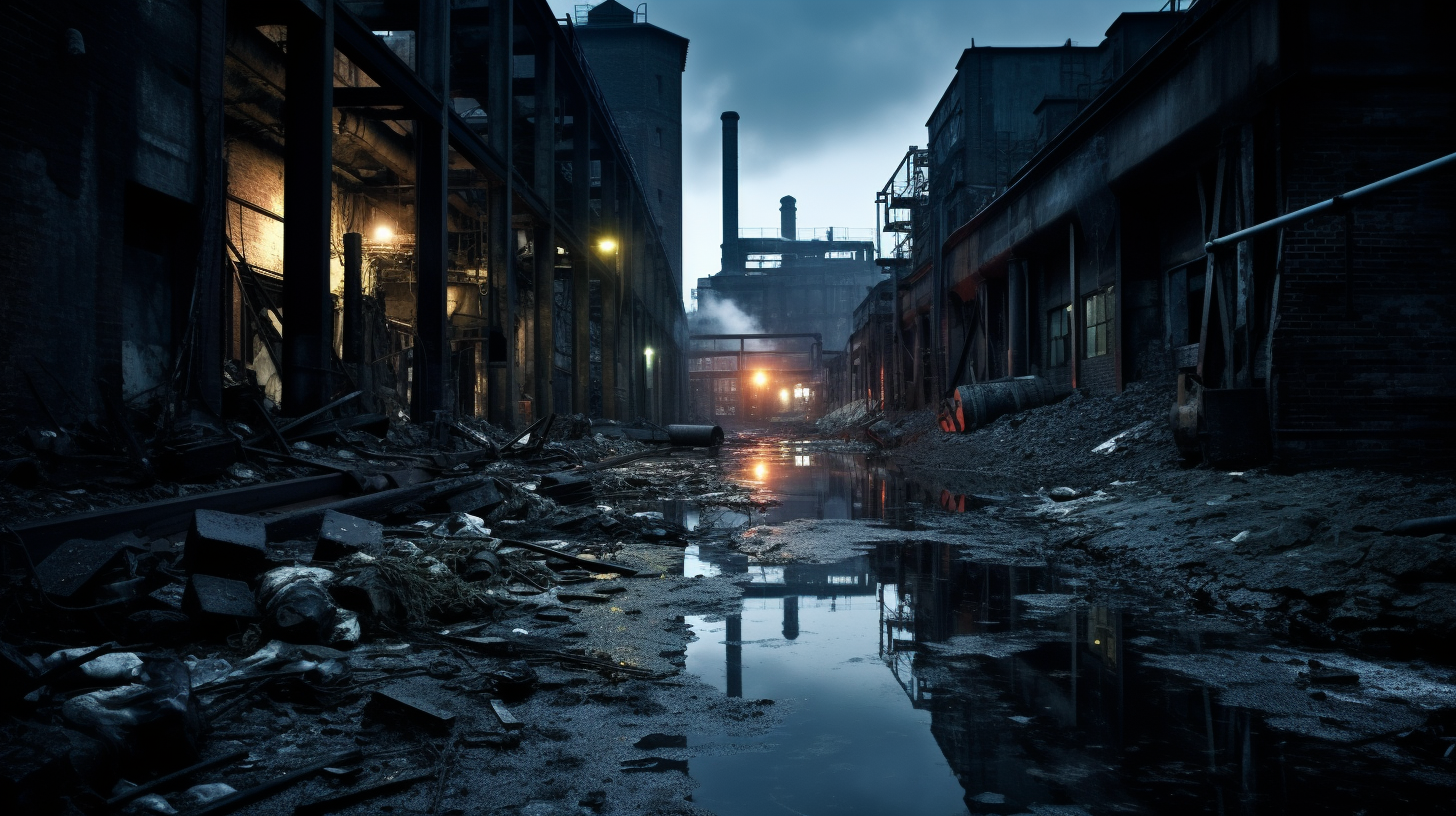Amidst the crumbling relics of industrial might, a hushed society thrives in the penumbra. The skeletal remains of what were once bustling centers of productivity now cast long, forlorn shadows over the land. The smokestacks, silent and stoic, no longer belch plumes of smoke into the atmosphere; they are but hollow tubes reaching towards a sullen sky. This is where our narrative unfolds, Life in the Shadows of Abandoned Factories, a chilling dive into the stark realities of a world we could have prevented.
In the outskirts of what was a flourishing town, the giant derelicts stand. They are monuments to an era of relentless exploitation that has given way to eerie quietude. Windows, akin to the vacant eyes of a dormant creature, are shattered. Nature has been unyielding in her reclaim, as green tendrils curl and twist through the cracked pathways that once vibrated with the relentless march of worker’s boots.
A Toxic Inheritance: The land around these factories is scarred with the toxins of a thousand chemicals. The soils, saturated with lead, mercury, and asbestos, cultivated only the hardiest of weeds. Yet, in this harsh landscape, humanity persists in the margins. The locals, grown resilient and wizened by their forbidding surroundings, have learned to endure where others might falter. Their lives, though fraught with the perils of contamination, are testament to the adaptability of humankind.
The Wraiths of Industry: Those who have remained are like phantoms, skirting the fringes of societal collapse. They scavenge what they can, repurposing relics of the factory’s bowels into tools and shelter. Within these hollow halls, communities have forged a bleak existence, tapping into the unchecked water that pools where machinery once roared, tainted with the residues of industrial past.
Artifacts of the Anthropocene: Glimpses of the past haunt every corner. Children play among decaying automatons, defunct yet imposing, their innocence juxtaposed with the rusted gears and pistons. Artists, too, have found a canvas in the decay. Murals depict the tumultuous relationship between man and nature, a vibrant rebellion splashed against a canvas of corrosion.
Yet, this place is no refuge. The wind carries the ever-present hum of a threat that looms just beyond sight. The water, though abundant, bears the curse of its legacy. Drinking it is a gamble with the highest stakes, and nourishment is gleaned from parcels of earth not visibly blighted by the chemical wraiths seeping from the factories’ entrails.
The Garden of Broken Machines: In defiance of the desolation, green shoots of life emerge. Innovators of necessity tend the ‘gardens’ where scrap metal blooms into improvised wind turbines, and solar panels forged from the wreckage provide a feeble yet precious electricity. This is the cradle of a desperate yet ingenious revolution, where survival hinges on the ability to adapt and repurpose.
This is not a fable from a distant tomorrow, but a portentous reflection of what could have been our today. As we meander through the ashen landscape, we’re ensnared by the incontrovertible truth of the present. It is a tale borne not out of fantasy, but of the heedless past that shaped an all too plausible world.
Do they have hope? Perhaps not. They have something more potent: resolve. In the wastelands, amongst the giants of yesteryear’s industry, lies a resilience that tells of human spirit, unbroken, if not unbowed, by the cataclysms wrought by man’s own hand.
We choose to end our tale here, leaving whispers in the echoing halls of these skeletal factories – a reminder of the resilience of life, even in the face of mankind’s darkest follies.
